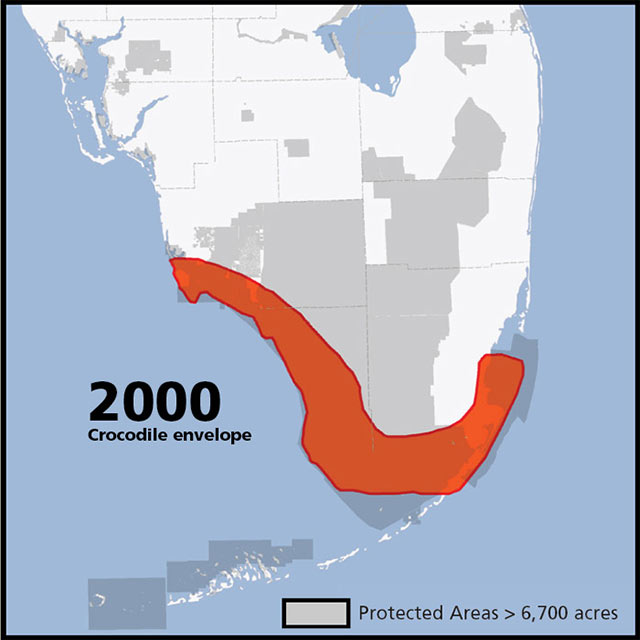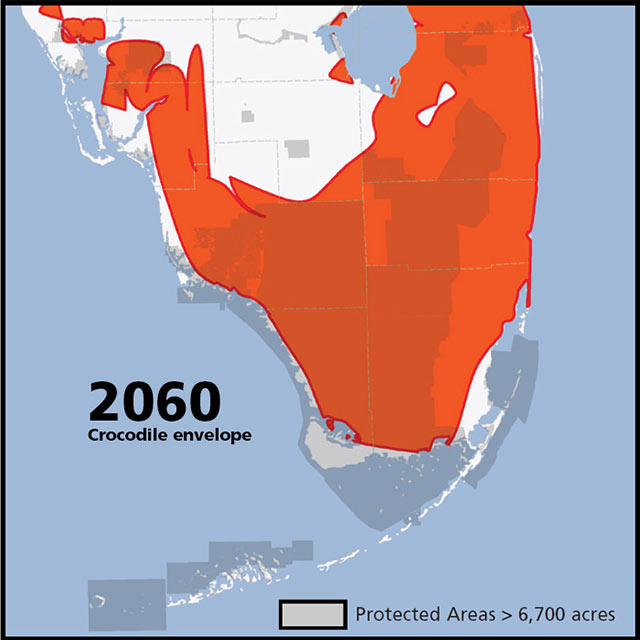Mangroves to the Rescue!
Scroll to learn moreBut Are They Drowning Too?
“…Mangroves are the first responders to sea level rise and intense storms….”Potential Ecological Consequences of Climate Change in South Florida and the Everglades, South Florida Natural Resources Center and Everglades National Park.
Mangroves hold back the salty sea, protecting inland environments. In this way, mangroves are critical in protecting south Florida’s coastal habitats in the midst of climate change. Mangroves can build up the peat soil with some amount of sea level rise, and still keep out salt water. But as sea level rise accelerates, salt water will increasingly wash over mangrove berms and inundate the ecosystems behind them.
Mangroves are slowing climate change by absorbing its cause—increased carbon dioxide. Higher temperatures and more carbon-dioxide tend to stimulate growth in mangroves. Will mangroves thrive in our changing climate? Maybe not. Studies also show that less rain and higher salt concentrations (both expected with climate change) reduce mangrove productivity.
Mangroves are barely able to keep up with sea level rise now. So do your part to reduce climate change and help the mangroves so they can continue to help us.
The Next Generation
Mangrove estuaries are home to the rare American crocodile. While adults can live in salt water, new hatchlings and young crocodiles actually need brackish water—a mixture of salt and fresh water. As sea level rises, it makes the water of the coastal zone saltier. Young crocodiles don’t grow as large in salt water, which results in higher mortality.
Crocodile Life Phases
A Changing Range
Crocodiles in south Florida exist at the northernmost reaches of their historic range. Climate envelope modeling suggests warming temperatures due to climate change could, in theory, help extend their range even farther north (see maps).
Still, the survival of crocodiles depends on more than temperature and rainfall alone. Nesting success requires both healthy coastal habitat and reduced salinity from the mixing in of fresh water. So despite favorable temperatures of climate change, sea level rise could reduce the numbers of surviving hatchlings.





